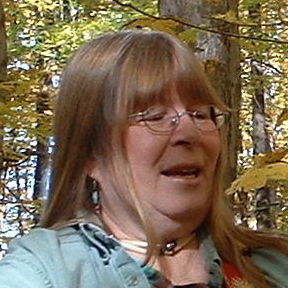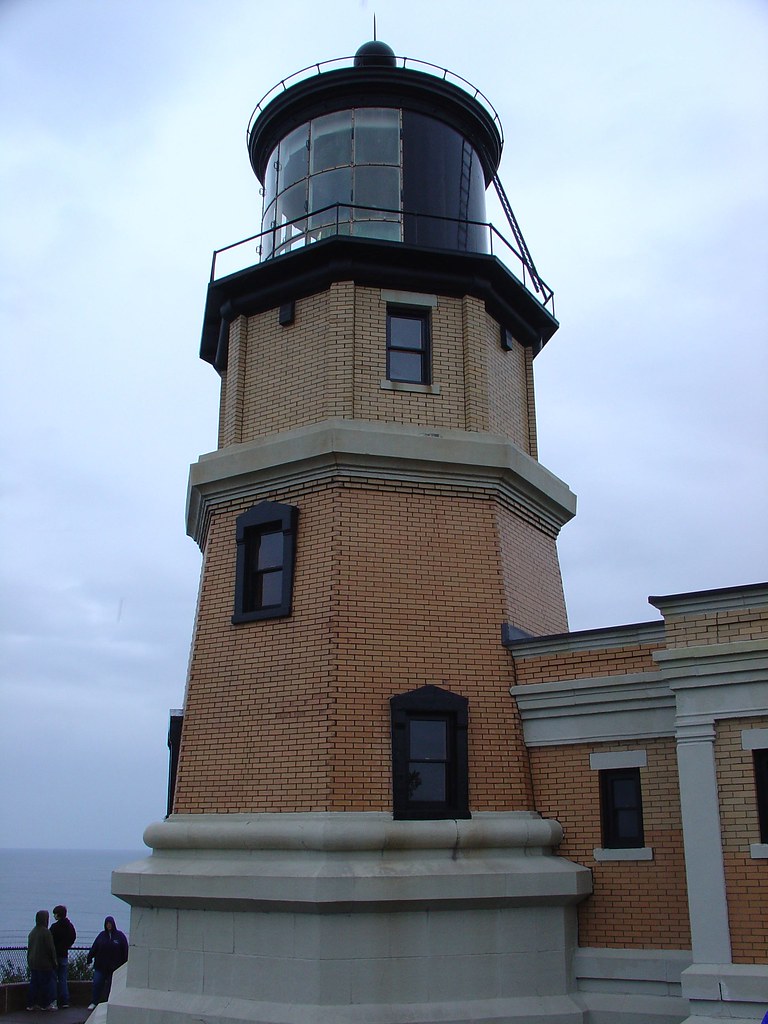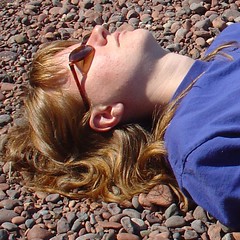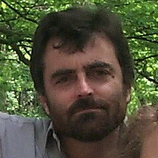story of Estevan
OK so there's this guy, Estevan, a black Moroccan, slave of a guy named de Carronca, and by chance, he's on this boat, which represented an attempt by Pamfico de Narvaez to settle Florida from Mexico, in 1528. And they get shipwrecked, and only four of them survive, landing around the Gulf coast somewhere but making their way, eventually, to what is today Galveston, Texas. The four that survive are Alvar Nunez Cabeza de Vaca, Andres Dorantes de Corranca, Alonzo de Castillo y Maldonado, and Estevan, a slave of de Carronca. So he's lucky to survive this terrible shipwreck, but unlucky in the sense that his owner survived as well, so he was still a slave. He has a name which will appear later as he, Estevan, eventually becomes the first black man in New Mexico.
These four start out from Galveston, and have a pretty hard time. Their goal is to get back to Spanish civilization, which in 1528 would be the center of Mexico, or, if you go straight west, somewhere in Chihuahua. There was not much in what is now Matamoros, Laredo, Big Bend, etc. Well, there were people, but they didn't especially like these four, or were inclined to help them. At some point however they picked up a story, the story of the Seven Cities of Cibola. Some textbooks have them picking up this story after they arrive in Chihuahua, or even after they first visit New Mexico (now you're talking only Estevan; the other three were not involved in the trip up to the Pueblos). But at some point they heard this story, and it apparently was well known.
Six of the Seven Cities of the Cibola (the buffalo, according to Sando, but "gold" according to other textbooks) were Halona, Matsaki, Kiakima, Kuakina, Kechipawa, and Hawikuh. These names are related by Joe Sando, too, I believe, in Nuevo Mexico, an anthology. There was a seventh city, Kwilelekia, he said, which wasn't found at that time, but has been found since then; it was near present-day Silver City, NM. Of these seven, one, Hawikuh, is known in the present day as the Zuni Pueblo. This is the one Estevan eventually walked into.
Ah but it took them years. These four set out west, from Galveston, and nearly starved several times. They were taken prisoner, escaped or were freed, and then taken prisoner again. It took them eight years, and finally they arrived in San Miguel de Culiacan, in western Mexico, so the story goes, in 1536. Here, the story goes, they were starved and delusional, bad shape, but they told the story of the Seven Cities to an eager audience of Spanish royalty and explorers. Upon hearing of Seven Cities of the Cibola, the Spanish who were generally inclined to "explore" got greedy; their mouths watered, their greed overflowed, and they decided to send an expedition up north to see what they could plunder.
Now keep in mind that this happens at a time where Spanish plunderers had already done in the Aztecs, but, based on what they'd found, they hadn't had reason, before, to think there
was much up in the New Mexico country. What few expeditions there had been, were not very successful, or hadn't come back. And, of the four ragged shipwreck survivors, three weren't interested in pursuing the matter, though Cabeza de Vaca's name sticks in my head, perhaps for other reasons. In any case, when they set out to explore the north, from San Miguel de Culiacan, they picked Marcos de Niza, a Franciscan friar, and another friar, and some native guides, and then they got Estevan to go along. Estevan from Azamore (Azzamour), they called him, and he was described as fanciful. They had purchased him from de Carronca. They set out for Hawikuh in 1539.
Estevan was fond of women and turquoise, and had a gourd with feathers, and began to get along well with people along the way, who kept providing him more of what he needed, and making him feel that he was indeed a great leader, come up north to communicate or for whatever reason. One friar got sick, and Marcos de Niza sent him back; then he, Marcos, became weary of Estevan's style, and had trouble staying with him. When Easter Week came they stopped in Vacapa and he chose to send Estevan ahead by himself. He told him the following:
If you find nothing, send back a cross the size of a hand. If you find something good, send back a cross twice the size of a hand. And if you find something great, like a country, with tons of gold, send back a cross the size of a man.
Four days later, a messenger appeared with a cross the size of a man. Marcos de Niza felt that Estevan had stumbled upon something.
Estevan made it up to Hawikuh (Zuni pueblo) but they killed him. According to Joe Sando, he'd offended them when he'd sent his calabash ahead of him; he claimed that he was the advance of a large party, and they should just deliver unto him, women, and turquoise, and whatever they had. The Zunis apparently felt that if he was the advance of a large party, it was just as well they should kill him, so he doesn't tell them where they were. In any case, the Zuni were known to say, "The first white man we ever saw was a black man." He's still portrayed, even today, at feast day in Jemez Pueblo, where a black man and white man are portrayed together.
Marcos de Niza made it a little later; he put crosses on the hillsides, declared the area as part of Spain, and went back to tell everyone about the Zuni Pueblo and whatever else he had found. He was later to say, I think, that there were indeed seven cities, and one, the one he had been to, was very good with the metalsmithing and thus worthy of plunder. People blame de Niza for spreading stories of gold and silver that eventually brought more Spanish up to New Mexico, looking for gold and silver. The origin of the story of the Seven Cities is unclear. Some NM History textbooks place it here: de Niza made it up, and went back and told everyone. Others say no, it was something the four shipwreck survivors heard, way down on the Gulf Coast or soon after. This also is something I'd like to look into.
sources on ancient Americas
These three were found in the chapter listed in the previous post. One would expect Mr. Sando, having made the claim about his work with the Caribbean languages, to at least provide someplace for us to start. These are the three he listed at the end of his chapter; I'm not sure what they contain.
Marder, William (2005). Indians in the Americas: The untold story. San Diego, CA: The Book Tree.
Sando and Agoyo (2005). Popay: Leader of the first American revolution. Santa Fe, NM: Clear Light Publishers.
Graham, John A. (1981). Ancient Mesoamerica: Selected Readings. MacNeish, Richard (1981). Ancient Mesoamerican civilization. Second edition. Palo Alto, CA: A Peek Publication.
Now I should point out that what you see above, in the third one, is somewhat unclear. Is that two different publications? If so, the first is quite incomplete. Is it possible that there is one inside of the other, given that they are the same year?
I haven't found out yet, still looking. More later.
Keres part II
So I'm a substitute teacher, and I get placed in a New Mexico History class, which is my favorite, because, as a history major, and Social Studies/History teacher wannabe, NM History is my weakness, so I have to bone up on the facts. So I start reading the textbooks that are given to the students, that, in this case, were actually under their desks. This particular one was an Anthology of readings by New Mexicans, including Joe Sando, and was the following:
Sando, J. The Pueblo People. In Nuevo Mexico: An anthology of history. 2009. New Mexico Highlands University: Semos Unlimited.
On p. 28 I found the following:
The second Pueblo Indian group to arrive were the Keresan Speakers. A similar language, which I believe was spoken in the Caribbean, caused me to decide that the Keresans migrated from the Caribbean islands. Columbus, we learned, arrived in the Caribbean on the island of Haiti; Hai-ti means "wherein" in Keres, and the leader whom Columbus met with was named Ha-ta-wehi, which means "corn pollen" in Keres. It is a man's name in Keresan. Columbus conferred the title of "Cacique" to Ha-ta-wehi, so most Pueblo titular leaders have that title today.
Today, when Keresans begin a story, they say Hama ha,i (hane) meaning "when we were in the east." Some of these words are for direction: east, west, south and north as hane, pune, coowa, and tipani. On one island, the residents near the islands were called Tiponicos (Northerners), Haynecas (Easterners), and Coowacon (Southerners).
During their migration westward the Keresans stopped in Florida. There the leader's home was covered with seashells,so they called it the white house. Eventually the Keresans arrived at Chaco Canyon, and lived there until the great drought also drove them to where the descendants are today. They brought the corn dance and the medicine society to the Pueblo Indian country.
Actually, I have to admit that I read that several times before I had the impulse to just copy it and put it here. It is possible that I mis-transcribed
Ha-ta-wehi, as one version, in my notes, has no -i at the end, whereas the other does. But I also noticed that the writing is not meticulously proofread, as there is an "also" in the third paragraph that doesn't seem to have any reference; it's not questioned, and these things sometimes happen in writing; who knows what he's referring to?
So, hot on the trail of this line of information, I did some more research. I was looking for independent verification that this Joe Sando linked the Keresan to the Caribbean, and I was looking for someone to say that either he was a respected historian, or he was a kook. Nothing. I couldn't find anyone that even mentioned his 2009 claim, and I haven't yet found the work he says it is based on (doesn't mean it's not out there). Joe Sando was a respected historian, from the Jemez Pueblo (near the Keresan ones, which include Acoma, and Laguna, Pueblos). He died a few years back. He was well known for sharing a lot of what he knew about the Pueblos, but not sharing their religion, which he figured was their own business.
There were three people who did work on the Keresan grammar, trying to interpret it, and make it available to the outside world. One, Joel Maring, is a father of a friend of mine in southern Illinois, and found that they actually had a different language for women and men, in the sense of at least having different words for a number of things; I was unable to get much more detail than that. But this rang a bell, because I remember that being true of the Arawak language, that was spoken in the Caribbean when Columbus arrived. What makes this important is that, if we're talking a migration of peoples here, they must have had enough men
and women to have made migration of the language possible. We're not talking three lonely guys in a boat here. We're talking migration of a people, and it's in about 1200 or 1300. I'd really like to get to the bottom of this.
Then, a couple more twisters if I may, but these are not carefully documented yet. I will try to document.
There were three people, as I said, who did work on the Keresan grammar, and they are easily found in the
Wikipedia references. They are Davis, Miller, and Maring. Maring's work was at one point called "unfortunate," for reasons I don't know. The Keresan people also requested that no more work be done on their language, by anyone, ever. That I found a little unusual. What happened? I am not purposely trying to connect these two events, which could be totally unrelated. At some point they decided that people looking into their language weren't helping them. Perhaps they decided they wanted no part of being traced to the Caribbean? Will they be mad at me if I even dig into it? I would be taking isolated words, like the ones you see above, and tracing them to Arawak, perhaps using notes from my graduate school, where I'd found an ancient book, written in French, that had described the Arawak language. My research, in that case, led me to use historical linguistic principles to relate Arawak to other languages, some deep in the Amazon, and perhaps Garifuna, which is supposedly related.
I promise to dig some of this stuff up and put it here as well. It seems to me, no work on languages is "unfortunate," though it's unfortunate if you get malaria in the process of gathering data. It also seems to me that if you have corn traditions, you wouldn't have started them in the Caribbean, nor would you have picked them up in the Big Bend on your way through what is today south Texas. They are finding stuff in Chaco Canyon, even today; it's obvious people had lively lifestyles, and wrote about them, back in 1200-1300. I am working toward a claim that 1) they knew what they were doing, 2) they didn't head up the Rio Grande
not knowing what they'd find; 3) they had a lot of people, yet
still had enough food for the long journey, assuming the Rio Grande had water back then; 4) there was some system of continent-wide communication, perhaps petroglyphs, that guided people in these epic journeys. When the mound people left their capital, present-day Cahokia, in 1200, they had already gone thousands of miles on rivers, up to Idaho, Canada, the Appalachians, the Gulf. We don't know why they would leave Cahokia, but we can suspect that they were aware of the Caribbean, and, they would be likely suspects for a "corn dance." But if you put yourself back in that era, and you run into a world traveler, presumably you don't share the same language, but are you going to give up? Or are you going to find the cool places there are, in the world, like Kathmandu, or Macchu-Piccu, and one or two among you are going to at least try? I think they were like us, except that 1) they didn't have Google Maps; 2) they knew the stars
real well, and 3) they did everything by river boat, and did it pretty well. That's all I can ascertain based on what I've read of Cahokia and Chaco Canyon, but I'd like to know more. And I'm not claiming that the mound people and the Caribbean-based Pueblos were the same people. What do I know? I just suspect that, at some point, they at least had contact. North America is only so big, and in these small places, people tend to know everything.






















































